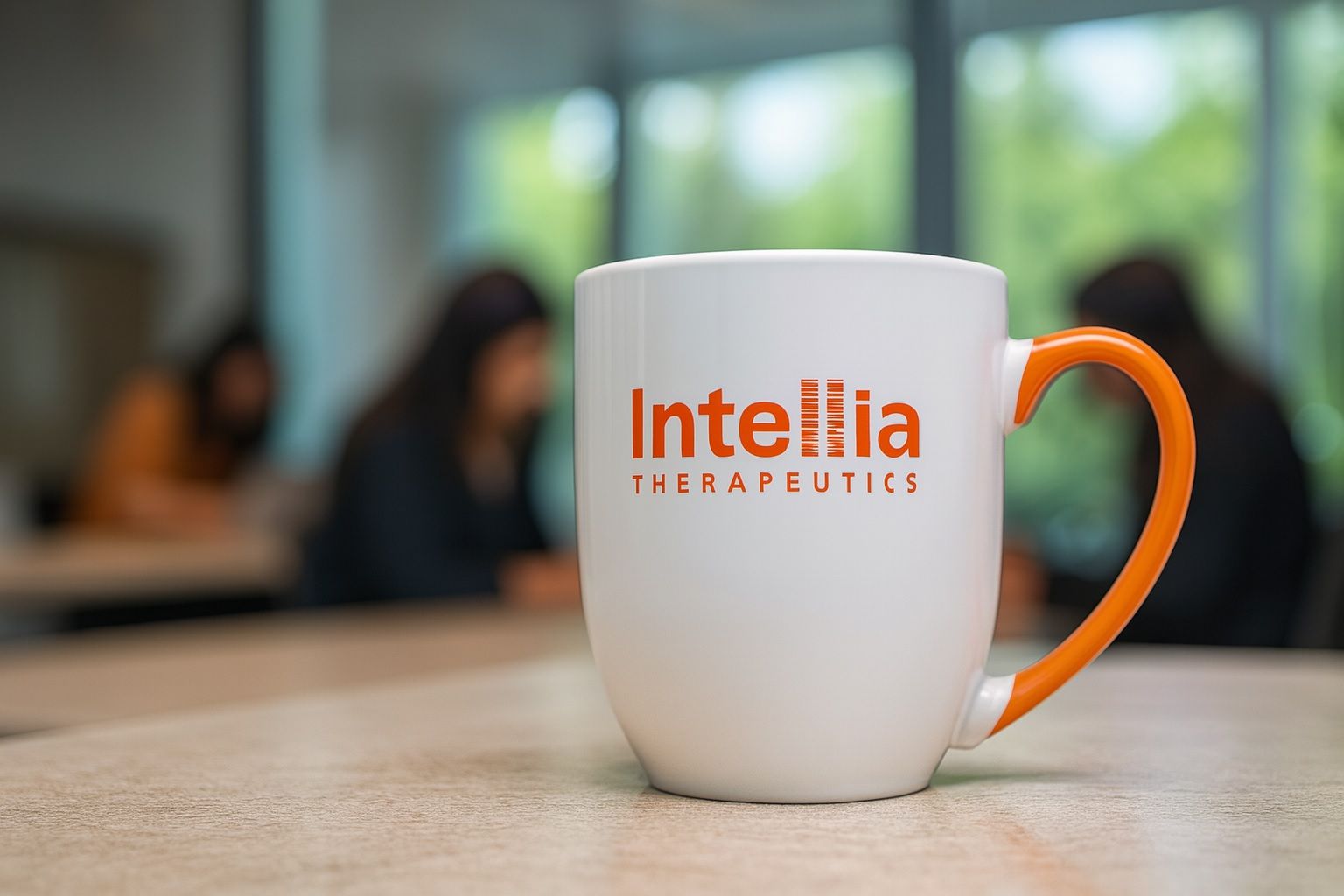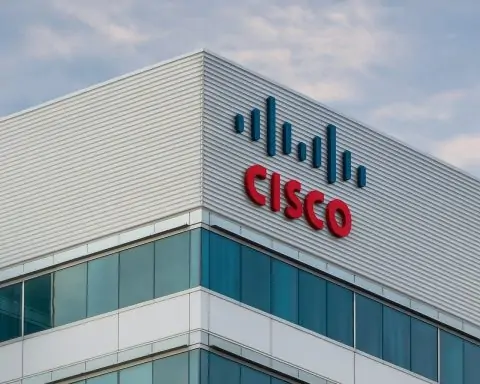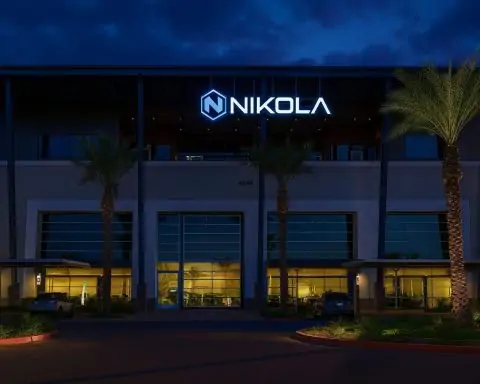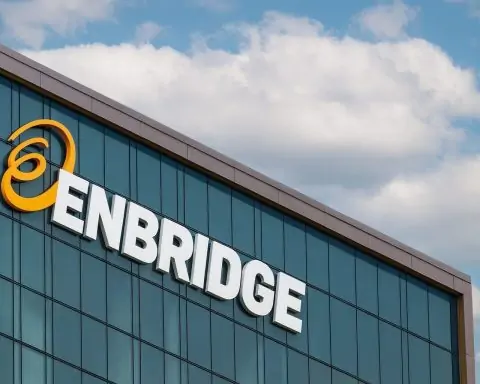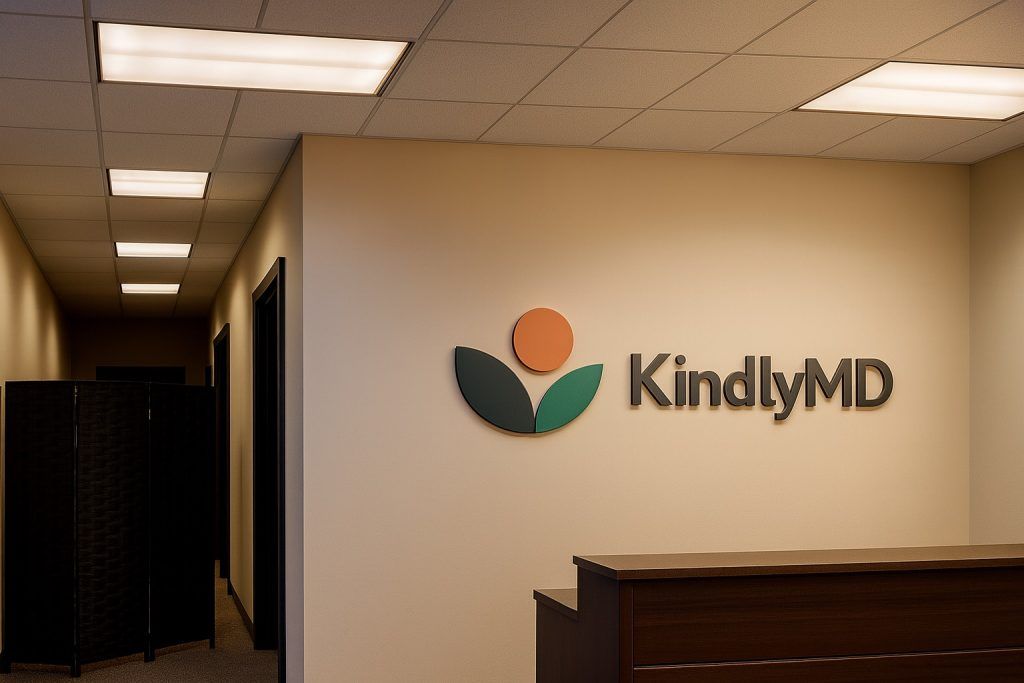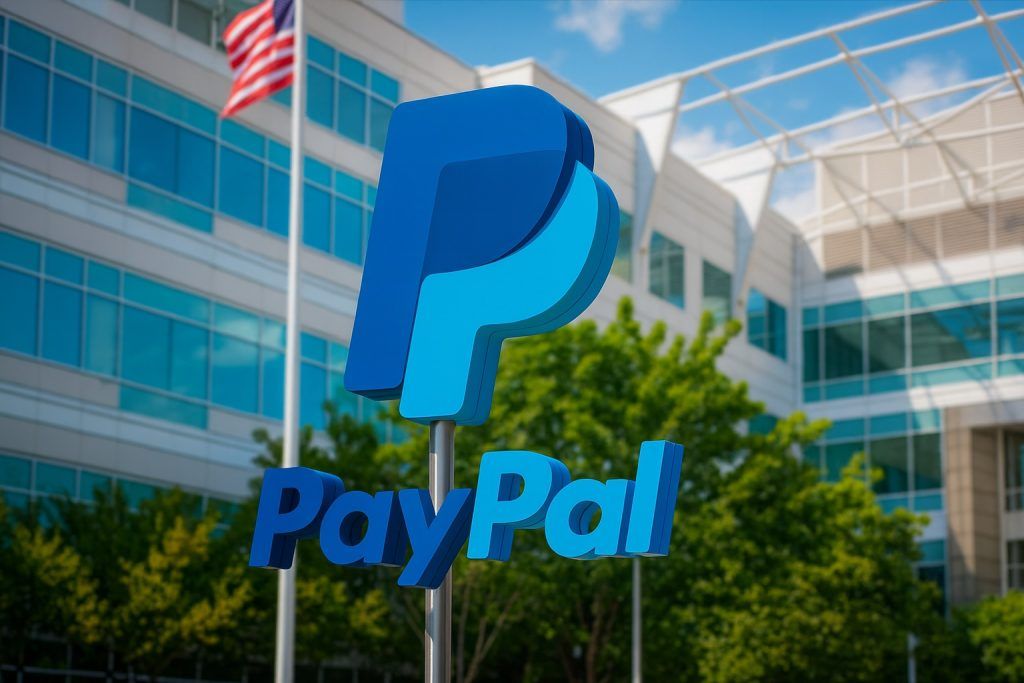- Stock Plunge: Intellia Therapeutics (NASDAQ: NTLA) shares crashed nearly 45% on Monday, Oct. 27, 2025, after the company halted two Phase 3 trials of its leading CRISPR therapy due to a serious patient safety event [1]. The stock fell from the mid-$20s to the low-teens in one session, erasing early October’s gains and even dragging down peers like CRISPR Therapeutics (CRSP), which slid ~10% in sympathy [2]. As of midday Oct. 28, NTLA was hovering around $14–15 per share – roughly flat after Monday’s rout [3].
- Trial Halt Over Safety: Intellia paused dosing and enrollment in its pivotal MAGNITUDE and MAGNITUDE-2 studies of NTLA-2001 (a one-time CRISPR gene-editing therapy for transthyretin amyloidosis) after a patient suffered Grade 4 liver toxicity, indicating severe liver injury [4]. The affected participant was hospitalized with abdominal pain and spiking liver enzymes, triggering a pre-specified safety stop in the trials [5] [6]. Intellia’s CEO, Dr. John Leonard, said the pause was “in line with our commitment to patient safety” and that the company is working with regulators on a plan to resume the trials “as soon as appropriate” [7].
- Analyst Downgrades: The safety scare prompted swift reactions on Wall Street. RBC Capital cut its rating from Outperform to Sector Perform and slashed its price target to $14 (from $21), citing the liver toxicity incident [8]. William Blair likewise downgraded NTLA to Market Perform, pointing to “current uncertainties surrounding safety of NTLA-2001 and … the remainder of patient enrollment” in the paused trials [9]. Bernstein lowered its rating to Market Perform (with a new $14.50 target), while BofA trimmed its target from $36 to $30 but maintained a Buy rating [10]. Even bullish analysts have tempered near-term expectations given the trial’s setback.
- Rally Reversed: The plunge comes on the heels of a fierce rally earlier in October. Just weeks ago, Intellia’s stock hit a multi-year high above $26 after the company reported breakthrough Phase 1 results showing ~90% “rapid, deep and durable” reductions in disease-causing TTR protein with its CRISPR therapy – with data published in the New England Journal of Medicine [11] [12]. Excitement over those results and a fast enrollment in Intellia’s other Phase 3 (for hereditary angioedema) had driven NTLA up roughly +150% from its 52-week low (near $6) and +60% year-to-date by mid-October [13]. That euphoria has now evaporated virtually overnight, as Monday’s news wiped out those gains.
- Outlook & Market Impact: Intellia insists the therapy’s benefits remain compelling – the CEO stressed the dramatic efficacy seen so far and vowed to ensure patient safety while moving forward [14]. However, the incident raises broader safety questions for gene editing. “The promise of one-and-done gene editing is huge, but we must prove we can do it safely,” one gene therapy expert cautioned [15], noting that regulators will be watching closely. Analysts say NTLA stock will likely stay volatile in the near term; the coming weeks (as investigators probe the liver event and regulators weigh in) will determine if this is a temporary setback or a sign of deeper challenges for Intellia’s high-stakes CRISPR platform [16].
NTLA Stock Plunges on Trial Halt
Intellia’s stock implosion began early Monday after the biotech stunned investors with news of a trial pause. Before the market opened on Oct. 27, the Cambridge, MA-based company announced it had temporarily halted patient dosing and screening in two late-stage trials of its in vivo CRISPR therapy NTLA-2001 due to a serious adverse event [17]. The immediate market reaction was brutal: NTLA stock plunged ~44% in pre-market trading and went on to close around $14.79 (down roughly 42% for the day) [18] [19]. In dollar terms, shares that traded near $25–26 late last week collapsed into the low-teens, vaporizing over $1 billion in market value in just hours [20].
The shockwave spread across the gene-editing sector – Intellia’s closest rival, CRISPR Therapeutics (which markets an ex vivo CRISPR therapy for sickle cell disease), saw its stock sink about 10% on Monday amid a broader reevaluation of CRISPR safety risks [21]. The biotech-heavy Nasdaq Biotechnology Index also faltered as investors digested what Intellia’s setback might imply for other cutting-edge therapies. By Tuesday Oct. 28, NTLA shares stabilized around the mid-teens, essentially flat in morning trade after the prior day’s bloodbath [22]. Traders appeared to be in wait-and-see mode, looking for further clarity from the company and regulators.
Severe Safety Scare Halts CRISPR Trial
The trigger for the crash was a serious safety issue in Intellia’s flagship program. The company’s MAGNITUDE trial – a Phase 3 study of NTLA-2001 (also called nexiguran ziclumeran or “nex-z”) in patients with transthyretin amyloidosis with cardiomyopathy (ATTR-CM) – reported that a patient experienced Grade 4 elevations in liver enzymes and bilirubin after receiving the one-time gene therapy [23] [24]. Grade 4 is a severe level of liver toxicity; enzyme spikes that high can signal risk of acute liver failure. The participant was hospitalized with abdominal pain and jaundice symptoms, and investigators quickly determined the event met the trial’s pre-defined safety threshold for an automatic pause [25].
In response, Intellia immediately halted dosing of new and existing patients in both the MAGNITUDE trial and a parallel MAGNITUDE-2 trial (which is testing the same therapy in ATTR patients with polyneuropathy) [26]. Regulators were notified of the voluntary pause. “In line with our commitment to patient safety, we have taken immediate action to temporarily pause enrollment … as we investigate this recent event,” said Intellia President and CEO John Leonard, M.D., adding that the company is “engaging with regulatory authorities and other stakeholders globally to develop a strategy to resume enrollment as soon as appropriate” [27]. Dr. Leonard emphasized that the top priority is the affected patient’s well-being while the cause of the liver injury is evaluated [28]. Intellia is consulting outside liver experts and the trials’ independent safety monitoring board to determine next steps [29].
At the time of the halt, Intellia’s ATTR amyloidosis trials were well underway. Over 650 patients had been enrolled across MAGNITUDE (cardiomyopathy) and MAGNITUDE-2 (polyneuropathy), with roughly 450 patients already dosed with NTLA-2001 prior to the pause [30] [31]. Notably, this is not the first liver-related safety alarm for NTLA-2001. Back in May 2025, Intellia disclosed that another trial participant had developed asymptomatic Grade 4 liver enzyme elevations (ALT/AST) [32]. That earlier case resolved on its own without any treatment, and at the time several analysts (William Blair, BMO, Truist) downplayed it as a “non-concern,” suggesting the market’s knee-jerk selloff in May was an overreaction to gene therapy safety fears in unrelated studies [33]. Intellia’s stock slid ~18–25% on the May news but gradually recovered as confidence returned [34].
This new adverse event appears more severe and consequential. Unlike the mild May incident, the latest patient’s liver injury triggered a formal trial pause and hospitalization – indicating a higher level of concern [35]. It also comes at a critical juncture: NTLA-2001 is now in Phase 3 with hundreds of patients exposed, whereas earlier testing involved only a few dozen patients. The emergence of a potentially treatment-related liver toxicity in a larger population is forcing a reset of expectations. Key questions include whether this was an isolated, idiosyncratic reaction in one patient or a warning sign of broader risk as the trial scales up. Investigators will examine whether the liver damage was caused by the gene-editing mechanism itself, the lipid nanoparticle delivery system, an off-target editing effect, or some other factor [36].
For now, Intellia has not given a timeline for resuming MAGNITUDE; the company said it is “weighing risk-reduction steps” and discussing next steps with the FDA and other regulators [37]. If authorities aren’t satisfied with the mitigation plan, they could impose a formal clinical hold, which might prolong the interruption. The timing is unfortunate, as Intellia had hoped to complete enrollment in these trials by mid-2026 and potentially seek regulatory approval by ~2028 [38]. A lengthy delay now could push those targets out and dent confidence in the program. Still, Intellia’s management and many analysts remain cautiously hopeful that the issue can be addressed. The best-case scenario is that the liver event turns out to be an isolated case or manageable with additional monitoring, allowing the trials to restart in short order (perhaps with protocol adjustments such as more frequent liver enzyme checks). Worst-case, if the safety signal suggests an unacceptable risk for patients, the trials could face an extended hold or major design changes – a serious blow to Intellia’s ambitions.
Intellia’s CRISPR Therapy: High Hopes and High Stakes
The paused therapy, NTLA-2001, is Intellia’s most advanced drug candidate and a linchpin of its valuation. It is an in vivo CRISPR-Cas9 gene-editing treatment designed to permanently “knock out” the TTR gene in liver cells, thereby halting production of misfolded transthyretin protein that causes ATTR amyloidosis [39]. The disease is a progressive, life-threatening condition where abnormal TTR protein builds up in organs like the heart and nerves, leading to cardiomyopathy and neuropathy. Current drugs (like Alnylam’s Amvuttra or Pfizer’s Vyndaqel) can slow the disease by targeting TTR, but none can cure it – they require chronic dosing to manage symptoms [40]. Intellia’s one-time IV infusion approach aims to provide a durable cure with a single gene edit, which would be a game-changer for ATTR patients.
Intellia is developing NTLA-2001 in partnership with biotech giant Regeneron Pharmaceuticals, which invested $70 million in the company back in 2016 and has rights to a significant share of the program [41]. The therapy holds FDA Orphan Drug status and a special Regenerative Medicine Advanced Therapy (RMAT) designation meant to expedite review [42] [43]. Until this week, NTLA-2001’s clinical data looked extremely encouraging: earlier Phase 1 trial results showed unprecedented efficacy – a ~92% mean reduction in TTR protein levels at 24 months after a single dose, sustained around 90% at three years, accompanied by meaningful improvements in patients’ neuropathy and cardiac function [44]. Those results, presented in late September and published in NEJM, gave a major credibility boost to Intellia’s program [45]. “These data demonstrate rapid, deep and durable TTR reductions with meaningful clinical improvements,” CEO John Leonard said at the time [46], calling it proof-of-concept that CRISPR gene editing could effectively halt ATTR progression.
That proof-of-concept drove enormous optimism. In fact, Intellia had been riding a wave of positive news beyond NTLA-2001. Around the same time, the company announced it fully enrolled its Phase 3 HAELO trial for NTLA-2002 – a similar one-shot CRISPR therapy for hereditary angioedema (HAE) – in just 9 months [47]. NTLA-2002 (a gene edit targeting the kallikrein gene to prevent HAE swelling attacks) had shown stunning early results as well: a 95–98% reduction in monthly HAE attack rates, with all treated patients remaining attack-free after a single dose [48]. This rapid progress in HAE underscored the broader promise of Intellia’s platform: functional cures for severe genetic diseases with one-time treatments.
From Breakthrough Rally to Sudden Shock
Fueled by these breakthroughs, Intellia’s stock went on a tear through late September and early October. After languishing under $10 for much of 2022–2023 amid sector-wide bearishness, NTLA shares had already rebounded to the high teens by September 2025 [49]. The wave of good news then ignited a ferocious rally: on Oct. 1, NTLA jumped ~10% in a single day to ~$19 [50]. By Oct. 7–8, the stock rocketed past $24 and even briefly topped $26 intraday [51]. Trading volumes surged as momentum buyers piled in, and Intellia marked a new 52-week (indeed, multi-year) high on Oct. 8 [52]. At that peak, shares were up roughly +150% from their 52-week low (near $6.28) and about +60% year-to-date [53]. The company’s market capitalization swelled above $2.2 billion – a heady valuation for a clinical-stage biotech with no approved products and only modest revenue [54].
Analysts and market pundits at the time were almost euphoric. “The news flow around early October 2025 is overwhelmingly positive for Intellia’s CRISPR programs,” one analysis gushed [55]. In the first week of October, multiple brokers raised their outlooks: JMP Securities upgraded NTLA to Market Outperform with a $33 price target, joining HC Wainwright (which bumped its target to $30) and Chardan Capital (issuing a high-end $60 target) in praising Intellia’s prospects [56]. Even star investor Cathie Wood’s ARK Investment Management was buying in – ARK reportedly snapped up ~99,000 NTLA shares on a dip earlier in the fall, a sign of conviction in Intellia’s gene-editing vision [57]. In short, Intellia was being viewed as a leading contender in the genomics revolution, with some calling it a potential “gene-editing goldmine.” Bulls pointed to blockbuster commercial projections if NTLA-2001 and NTLA-2002 succeed – by some estimates, the two therapies could collectively reach ~$17 billion in peak annual sales by 2028, which would transform Intellia’s financial profile [58].
Against this backdrop of optimism, the sudden safety scare in late October was especially jarring. It struck at the very heart of the bull thesis: the idea that Intellia’s CRISPR cures could be game-changers for deadly diseases. Now that thesis faces a real test. Investors who chased the stock into the mid-$20s only weeks ago have seen their positions halved virtually overnight, a harsh reminder of biotech’s volatility and the binary risks of drug development [59]. As one commentator presciently warned when NTLA was soaring: “Bear in mind, any setbacks (e.g. trial delays or safety issues) could swiftly reverse these gains.” [60] Unfortunately for Intellia and its shareholders, those words proved prophetic.
Wall Street’s Take: Short-Term Caution, Long-Term Hope
The dramatic events of Oct. 27 have understandably rattled investors, but how are analysts interpreting Intellia’s outlook now? In general, sentiment is split – there’s lingering long-term optimism about CRISPR’s potential, tempered by sharp short-term caution due to this setback.
Even after Monday’s plunge, the broader Wall Street consensus on NTLA heading into this week was bullish. According to TipRanks data from late October (before the news), 17 out of 18 analysts covering Intellia rated it a Buy or Strong Buy, with just 1 Hold and zero Sells [61]. The average 12-month price target was around $31–32 per share [62] – which, when the stock was ~$20+, implied healthy upside, and now from ~$14 implies a nearly 200% gain if the company can get back on track. Price targets ranged widely, though. On the high end, extremely bullish shops like Chardan had targets in the $ Fifty-plus (Chardan at $60) [63], expressing confidence that Intellia’s therapies will eventually dominate their niches. On the low end, a couple of more skeptical firms urged caution: for instance, Wedbush Securities maintained a Neutral rating and a $7 target, citing concerns about “lengthy timelines” and looming competition – essentially warning that Intellia’s valuation had gotten ahead of itself [64]. After this week’s drop, Wedbush’s $7 bearish case suddenly doesn’t seem so far-fetched, while the upbeat targets now look more aspirational. Clearly, expectations will be reset as analysts update their models for the trial pause.
In the immediate aftermath of the safety news, several brokerages downgraded or adjusted their ratings – puncturing the unanimity of bullish calls. On Tuesday (Oct. 28), William Blair cut its rating from Outperform to Market Perform, explicitly citing “uncertainties surrounding [the] safety of NTLA-2001 and … the remainder of patient enrollment” in the ATTR trials [65]. RBC Capital likewise downgraded NTLA (from Outperform to Sector Perform) and slashed its price target from $21 to $14, basically conceding that much of the stock’s previous value was predicated on a smooth path for NTLA-2001 [66]. Bernstein downgraded the stock as well (to Market Perform) and set a roughly $14.50 target going forward [67]. A few banks stopped short of downgrades but still took a more cautious stance: Bank of America trimmed its NTLA target from $36 to $30 though it kept a Buy rating, and Oppenheimer maintained Outperform but cut its target from $45 to $33 [68]. These moves reflect a consensus that near-term risk has clearly risen, even if the long-term story isn’t broken.
Some analysts argue the sell-off may be overdone if the safety issue proves manageable. It’s common for gene therapy and gene-editing stocks to tumble on scary headlines, only to rebound if the actual impact turns out limited. Observers point out that in other biotech cases from 2023–25, initial safety scares didn’t always derail the whole program [69]. Back in May, for example, BMO Capital Markets suggested that Intellia’s stock drop on the first liver enzyme case was “more due to recent patient deaths in the gene therapy space than the severity of this particular incident,” essentially urging investors not to panic prematurely [70]. We may see a similar cautiously optimistic stance now among some experts: i.e. if the hospitalized patient recovers and the trial resumes within a few weeks, the long-term value of NTLA-2001 might remain intact, meaning Intellia’s collapse could prove partly reversible. However, it all hinges on what the investigation finds. As one analyst put it, if the pause is lifted quickly and the fix is straightforward, this could be “a hurdle, not a brick wall.” But if the safety signal indicates a fundamental problem – say, an immune reaction to the CRISPR or a toxicity inherent to the therapy – then expect more downgrades and target cuts ahead [71]. In that bleaker scenario, Intellia’s development timeline would stretch out and confidence in the platform would take a serious hit.
It’s undeniable that Intellia is a high-risk, high-reward story – now more than ever. Financial commentators have often noted the stock’s speculative nature. For instance, investment platform Finimize recently pointed out Intellia’s steep valuation relative to its minimal current revenue, and its heavy cash burn, concluding that NTLA is “a high-risk, high-reward” play best suited for investors able to stomach big swings [72]. That characterization rings true this week. Intellia’s beta (a volatility gauge) was around 2.3 heading into October, meaning it’s more than twice as volatile as the overall market [73]. Monday’s 40% crash painfully demonstrated that downside volatility. Yet believers argue the upside could be equally dramatic in the long run: if Intellia manages to bring a functional cure for ATTR and HAE to market, the company’s revenue could explode and the stock might eventually revisit far higher levels. Some bulls have even mused that Intellia’s market value could increase ten-fold over time if both NTLA-2001 and NTLA-2002 achieve their forecasted peak sales (~$17 billion combined) [74]. Of course, those projections assume everything goes right – a rosy assumption now challenged by reality.
Company Fundamentals and Market Context
Stepping back, Intellia Therapeutics remains a clinical-stage biotech with no products on the market yet. That means its fortunes (and stock price) rely entirely on the perceived prospects of its R&D pipeline. The company does generate modest revenue from research collaborations – about $53 million over the past 12 months, largely from milestone payments by partners like Regeneron [75] [76]. But it is not profitable, and quarterly operating losses exceed $70 million as Intellia pours money into R&D [77] [78]. The good news is that Intellia has built a solid balance sheet to fund these efforts: as of mid-2025, it held roughly $630 million in cash and short-term investments [79]. Management has taken steps to conserve cash, including a 27% workforce reduction and culling of non-core programs earlier this year [80]. Thanks to those moves, the company estimates it has enough cash to run into 2027 without needing new funding [81]. Importantly, Intellia carries very low debt and a strong current ratio (~5x) [82] [83], so there’s no near-term liquidity crisis looming. This war chest gives Intellia some breathing room to weather setbacks – a crucial buffer now that NTLA-2001 may face delays. Many small biotechs hit by a trial failure also face a cash crunch; fortunately Intellia is not in that dire position and can afford to take the time to address the MAGNITUDE trial issues properly [84] [85].
Intellia also benefits from a roster of strategic partnerships that not only validate its technology but could offer lifelines if needed. Regeneron’s collaboration is the most prominent – beyond co-developing NTLA-2001, Regeneron has optioned up to 15 gene-editing targets with Intellia and has expanded the alliance over time [86] [87]. Other partners include Novartis (for certain CAR-T cell therapy programs), AvenCell (a joint venture on allogeneic CAR-T), Kyverna (autoimmune diseases), ONK Therapeutics (natural killer cell therapies), and ReCode Therapeutics (improving lipid nanoparticle delivery) [88] [89]. These deals bring in cash and expertise – for example, a recent collaboration milestone payment helped double Intellia’s revenue in Q2 2025 year-on-year [90] [91]. While none of these partnerships replaces the need for a successful product, they underscore that Big Pharma and others see real promise in Intellia’s CRISPR platform. That external vote of confidence can be reassuring to investors during rocky moments.
More broadly, Intellia’s setback is sending ripples through the gene-editing and biotech sector. CRISPR-based medicines are at the frontier of science, and this episode highlights the central challenge: safety. CRISPR Therapeutics (NASDAQ: CRSP) has already achieved a milestone with the first FDA-approved CRISPR therapy (an ex vivo treatment for blood disorders), but Intellia is among the leaders in the more challenging arena of in vivo gene editing – delivering the CRISPR drug directly into a patient to edit genes inside the body [92]. Intellia was the first to dosed patients with in vivo CRISPR back in 2021, and its progress has been closely watched. Now, rival companies like Editas Medicine (EDIT) and Beam Therapeutics (BEAM), which are developing their own next-gen editing approaches, will be scrutinizing how regulators react and whether any new safety guidelines emerge [93] [94]. The FDA has a history of placing clinical holds on novel gene therapy trials when serious adverse events arise, at least until thorough investigations are completed [95]. It’s possible Intellia’s experience will lead to closer safety monitoring requirements for similar studies, or a bit of cooling in the recent enthusiasm (and valuations) for gene-editing stocks. On the other hand, each program is unique – if Intellia can resolve this issue and show that its ATTR cure’s benefits outweigh the risks, it would validate the platform and clear a path forward. If not, others in the field (for example, Beam’s base-editing technology, which might have different safety attributes) will try to seize the mantle [96].
Future Forecast: Volatility Ahead, Promise Intact?
Looking ahead, most analysts agree that NTLA stock will remain volatile as new information emerges about the trial pause. In the short term, sentiment is jittery – any hint from Intellia or regulators (be it a positive update or a deeper concern) could send shares lurching in either direction [97]. Traders will be closely watching for Intellia’s next public communication on the patient’s status and any FDA commentary on the trials. In the medium term, there are still important catalysts on the horizon that could sway the narrative. For instance, the first efficacy data from the Phase 3 HAE trial (NTLA-2002) is expected sometime in 2026 [98]. Strong results in HAE could rekindle optimism and validate Intellia’s CRISPR platform even if the ATTR program has hit bumps. Conversely, if any issues arise with NTLA-2002 or other pipeline programs, it would amplify doubts about Intellia’s approach. The company’s fate in the next couple of years really hinges on these two lead programs – if both deliver successful outcomes, Intellia could emerge as a leader in genomic medicine; if one or both falter, the road to commercialization (and profitability) gets much longer, likely forcing Intellia to seek additional capital or partnerships down the line [99] [100].
For now, Intellia stands at a crossroads. It has shown tantalizing potential to revolutionize medicine with one-shot genetic cures, yet it must navigate the perilous minefield of human biology and clinical development to make that vision a reality. The next few weeks and months – as Intellia addresses the safety issue and engages with regulators – will be crucial in determining whether NTLA’s October crash proves to be a temporary setback on the road to biotech history, or a sign of more formidable challenges ahead [101]. The stakes are high, not just for Intellia’s shareholders but for the broader promise of CRISPR-based therapeutics. As one analyst summed up Intellia’s predicament: the company remains “an ambitious pioneer in gene editing with tremendous upside, but one for investors with a strong stomach for risk.” [102]
Sources: Press releases, Intellia Therapeutics filings, Reuters [103] [104], Investing.com [105] [106], TipRanks/MarketBeat data, and TechStock² (ts2.tech) analysis [107] [108].
References
1. ts2.tech, 2. ts2.tech, 3. www.marketbeat.com, 4. ts2.tech, 5. www.investing.com, 6. ts2.tech, 7. ts2.tech, 8. www.investing.com, 9. www.investing.com, 10. www.investing.com, 11. ts2.tech, 12. ts2.tech, 13. ts2.tech, 14. ts2.tech, 15. ts2.tech, 16. ts2.tech, 17. ts2.tech, 18. ts2.tech, 19. www.marketbeat.com, 20. ts2.tech, 21. ts2.tech, 22. www.marketbeat.com, 23. ts2.tech, 24. ts2.tech, 25. www.investing.com, 26. ts2.tech, 27. ts2.tech, 28. ts2.tech, 29. ts2.tech, 30. ts2.tech, 31. ts2.tech, 32. ts2.tech, 33. ts2.tech, 34. ts2.tech, 35. ts2.tech, 36. ts2.tech, 37. ts2.tech, 38. ts2.tech, 39. ts2.tech, 40. ts2.tech, 41. ts2.tech, 42. ts2.tech, 43. ts2.tech, 44. ts2.tech, 45. ts2.tech, 46. ts2.tech, 47. ts2.tech, 48. ts2.tech, 49. ts2.tech, 50. ts2.tech, 51. ts2.tech, 52. ts2.tech, 53. ts2.tech, 54. ts2.tech, 55. ts2.tech, 56. ts2.tech, 57. ts2.tech, 58. ts2.tech, 59. ts2.tech, 60. ts2.tech, 61. ts2.tech, 62. ts2.tech, 63. ts2.tech, 64. ts2.tech, 65. www.investing.com, 66. www.investing.com, 67. www.investing.com, 68. www.investing.com, 69. ts2.tech, 70. ts2.tech, 71. ts2.tech, 72. ts2.tech, 73. ts2.tech, 74. ts2.tech, 75. ts2.tech, 76. ts2.tech, 77. ts2.tech, 78. ts2.tech, 79. ts2.tech, 80. ts2.tech, 81. ts2.tech, 82. ts2.tech, 83. ts2.tech, 84. ts2.tech, 85. ts2.tech, 86. ts2.tech, 87. ts2.tech, 88. ts2.tech, 89. ts2.tech, 90. ts2.tech, 91. ts2.tech, 92. ts2.tech, 93. ts2.tech, 94. ts2.tech, 95. ts2.tech, 96. ts2.tech, 97. ts2.tech, 98. ts2.tech, 99. ts2.tech, 100. ts2.tech, 101. ts2.tech, 102. ts2.tech, 103. ts2.tech, 104. ts2.tech, 105. www.investing.com, 106. www.investing.com, 107. ts2.tech, 108. ts2.tech
